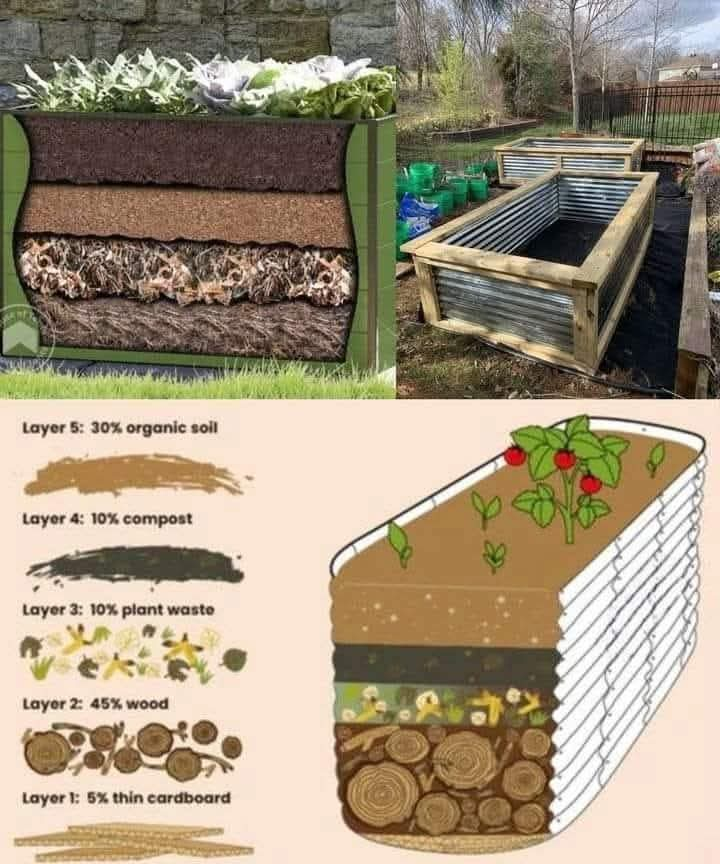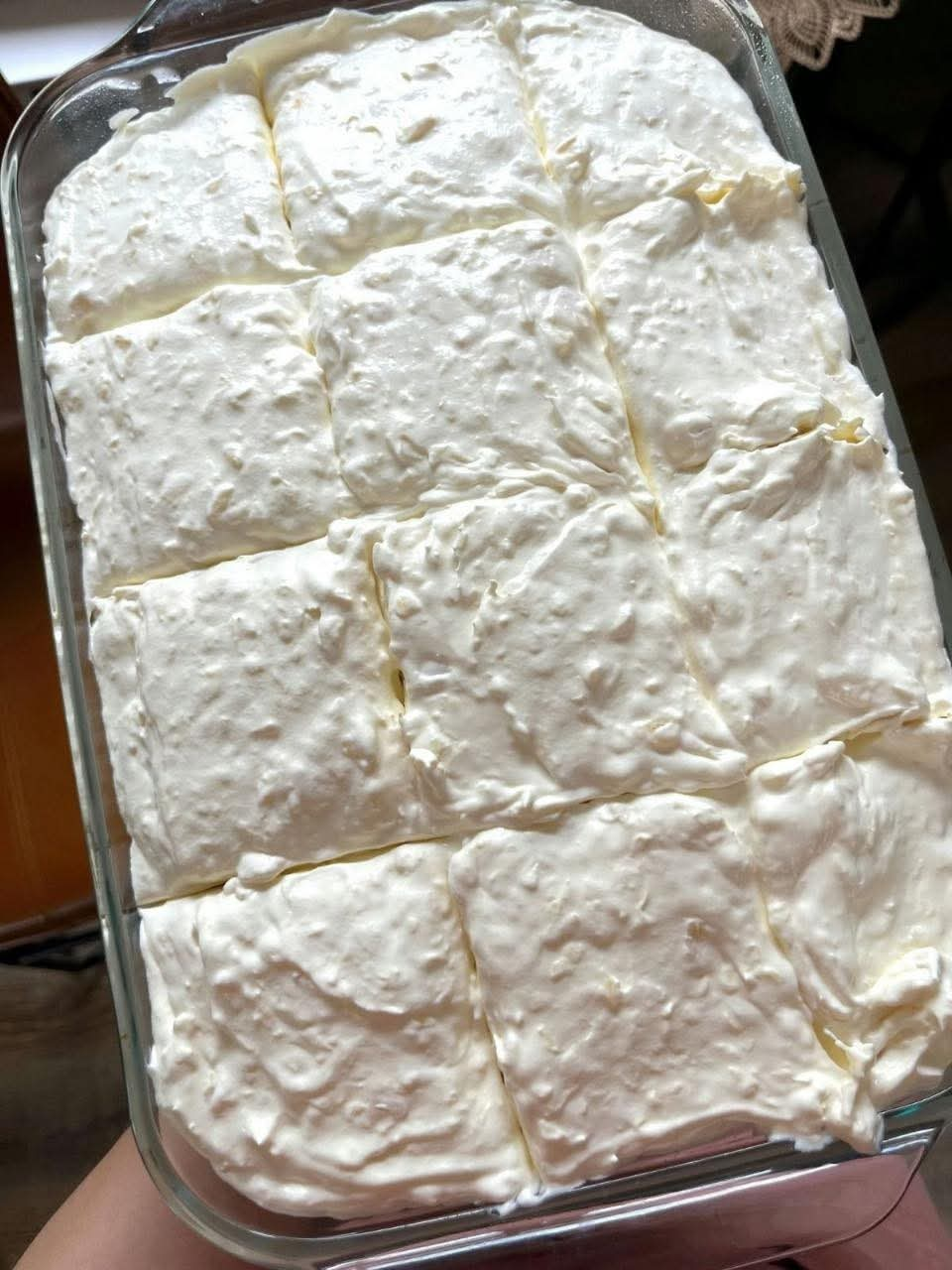If you’ve ever built a deep raised bed, you know that filling it with quality soil can be expensive. But don’t worry—there are cost-effective ways to get the job done while ensuring your plants thrive in a nutrient-rich environment. This method follows layering techniques similar to hugelkultur to save money, improve drainage, and promote healthy plant growth.
Why Use a Layered Approach?
✔ Saves Money – Using free or inexpensive organic materials reduces the need for costly soil.
✔ Improves Drainage – Logs, branches, and other bulky materials prevent waterlogging.
✔ Boosts Soil Fertility – Organic layers decompose over time, creating nutrient-rich soil.
✔ Encourages Beneficial Microbes – Layers of compost and organic matter feed the soil life, enhancing plant health.
Step-by-Step Guide to Filling a Deep Raised Bed on a Budget
- Start with the Base: Bulk Materials
Instead of filling the entire bed with soil, start with large, inexpensive organic materials to take up space while benefiting the soil over time.
What to Use for the Bottom Layer:
✅ Logs and Large Branches – Decompose slowly, providing nutrients over time.
✅ Dead Leaves – Rich in carbon, helping improve soil structure.
✅ Straw or Hay – Holds moisture and breaks down quickly to enrich the soil.
✅ Cardboard – Suppresses weeds while acting as a biodegradable base.
💡 Pro Tip: If using logs, try to pick hardwoods like oak, which decompose slower and provide long-term nutrients. Avoid treated wood or fresh pine, as it can be too acidic.
- Add Organic Matter
After placing your base layer, add organic materials that will break down and improve soil fertility over time.
Best Organic Matter to Use:
✅ Compostable Kitchen Scraps – Fruit peels, vegetable scraps, and coffee grounds.
✅ Unfinished Compost – Will continue breaking down, adding nutrients.
✅ Manure – Aged chicken, cow, or horse manure boosts nitrogen levels.
💡 Pro Tip: Avoid adding meat, dairy, or greasy foods, as they can attract pests.
- Add a Middle Layer for Drainage & Nutrients
Now, add a nutrient-rich middle layer that supports plant roots while allowing proper drainage.
Best Middle Layer Materials:
✅ Garden Soil – A mix of existing soil from your yard.
✅ Compost – Adds beneficial microbes and organic matter.
✅ Aged Mulch or Wood Chips – Helps with moisture retention and aeration.
💡 Pro Tip: If using wood chips, make sure they are well-aged, as fresh ones can pull nitrogen from the soil.
- Top Layer: High-Quality Soil
The top 6 to 12 inches should be filled with the best soil possible to give plants the nutrients they need to thrive.
Best Top Layer Materials:
✅ Nutrient-Rich Compost – Provides essential nutrients for plant growth.
✅ Potting Soil Mix – A light, aerated mix for good drainage.
✅ Garden Soil & Compost Mix – A 50/50 blend works great for most plants.
💡 Pro Tip: If growing root vegetables, ensure the topsoil is deep and loose for proper root development.
- Water & Let It Settle
Once your layers are in place, water thoroughly to help everything settle and kick-start the decomposition process.
How to Water Effectively:
✔ Water each layer as you build to reduce large air pockets.
✔ Let the bed sit for a few days before planting to allow materials to settle.
✔ Check moisture levels regularly and adjust as needed.
- Mulch the Surface
To retain moisture and suppress weeds, finish your raised bed with a layer of mulch.
Best Mulch Options:
✅ Straw or Hay – Keeps the soil moist and weed-free.
✅ Grass Clippings – Adds nitrogen as it decomposes.
✅ Shredded Leaves – A great free and natural mulch option.
💡 Pro Tip: Avoid mulching too close to plant stems to prevent rot.
Common Questions & Tips
Can I Fill a Raised Bed with Just Compost?
Yes, but compost alone can be too rich for some plants. Mixing it with garden soil and organic matter ensures a balanced growing environment.
How Deep Should the Soil Be?
Most plants thrive with 6–12 inches of high-quality topsoil. Deep-rooted plants, like tomatoes and carrots, need at least 12 inches.
Should I Add Worms?
If your soil is healthy, worms will naturally appear! You can add composting worms to speed up decomposition.
What If I Don’t Have Logs or Leaves?
Use whatever organic materials you have, like shredded newspaper, straw, or coconut coir.
How Long Does It Take for the Bottom Layers to Decompose?
Larger materials like logs break down over years, continuously enriching the soil. Smaller materials decompose within a season or two.
Final Thoughts
Filling a deep raised bed doesn’t have to break the bank. By using logs, compost, garden soil, and mulch, you can create a rich, well-draining, and budget-friendly growing environment.
By following these cheap and easy layering methods, you’ll build a long-lasting raised bed that improves your soil year after year!
🌿 Have you tried this method? Let me know how it worked for you!
More Articles You Might Like
-
Texas Toast Sloppy Joes: The Crunchy, Cheesy Upgrade You Didn’t Know You Needed
There’s something timeless about sloppy joes. For generations, this saucy, savory, and slightly sweet ground beef sandwich has been a go-to comfort food in American kitchens. It’s quick, filling, and family-friendly—perfect for busy weeknights. But what if we told you there’s a way to take this classic dish up a notch? Enter the Texas Toast…
-
Classic Pig Pickin’ Cake
When it comes to Southern desserts, few sweets shine as brightly as the Classic Pig Pickin’ Cake. This nostalgic cake, sometimes called a “Mandarin Orange Cake,” has roots deep in Southern tradition. It gets its playful name from its frequent appearance at pig pickin’s—Southern-style barbecue gatherings where communities come together to enjoy slow-cooked pork, sides,…
-
Lemon Garlic Butter Chicken with Creamy Parmesan Pasta
There’s something irresistible about the combination of tender, golden-browned chicken paired with a creamy pasta coated in Parmesan cheese. Add the brightness of lemon, the depth of garlic, and the richness of butter, and you have a recipe that feels indulgent yet approachable enough for a weeknight dinner. Lemon Garlic Butter Chicken with Creamy Parmesan…



